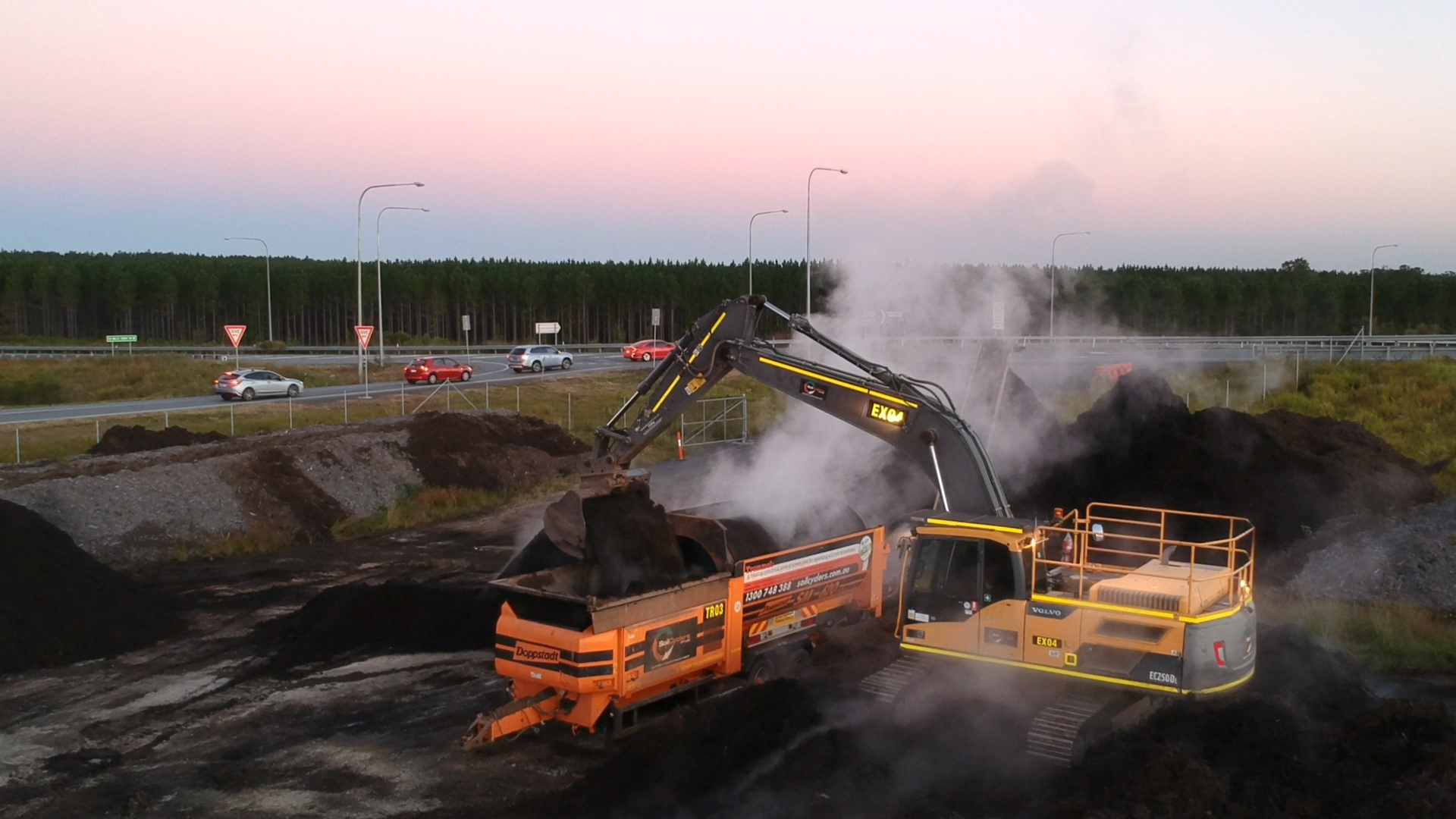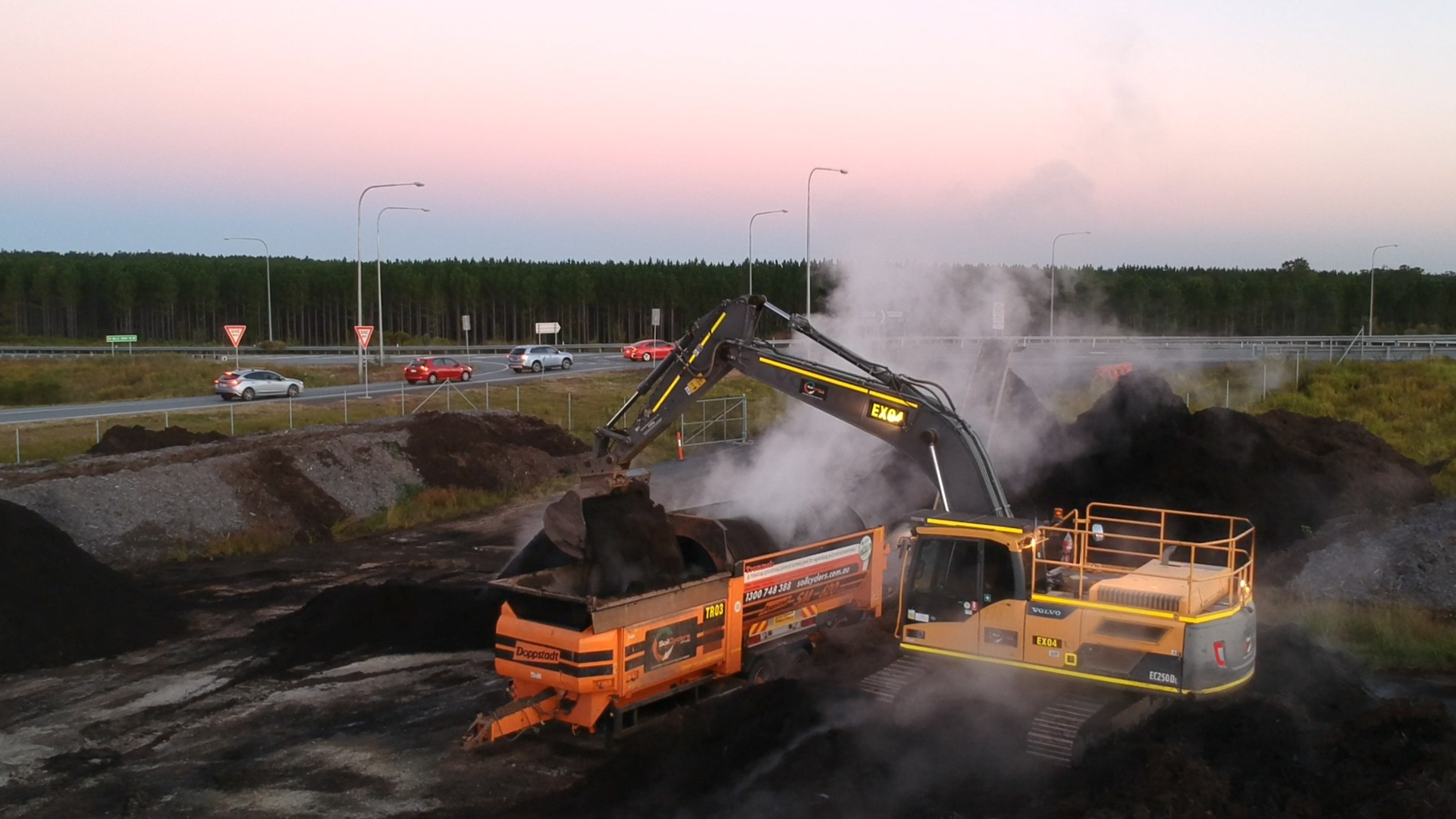Why is Resource Efficiency Important for Infrastructure Sustainability?
Resource Efficiency in a Circular Economy
IS Thought Leadership by Alison Price and Danica Streader, SoilCyclers Pty Ltd
The construction industry is one of the largest waste producers in Australia, generating more than 20 million tonnes of construction and demolition waste each year. As organisations seek out new opportunities to achieve competitive advantages and innovations, the focus of some businesses has started to turn to resource efficiency. For larger infrastructure projects, the value in successful resource management lies in the ability to scale your own onsite recycling processes.
Why is Resource Efficiency Important for Infrastructure Sustainability?
Traditionally, the civil construction industry has focused efforts on moving the maximum amount of soil within the shortest time frame, as cheaply as possible. Our current highly competitive environment is forcing companies to incentivise innovation, with businesses now finding new sustainable opportunities through turning unsuitable site materials into viable specification resources for onsite reuse.
Turning unsuitable site soils into specification topsoils that require less water costs less upfront, and results in reduced maintenance costs for the asset owner. The new goal for contractors is to not only complete the project on schedule and on budget, but to hand over a visually attractive asset the community can be proud of with reduced or self-sustaining maintenance costs. By reducing the use of raw resources, you can cut costs and create a virtuous economic cycle.
While states like Victoria are leading the way in promoting recycled content on highways and roads, there are very limited specifications for recycled content in landscaping or anything other than the road itself. On the other hand, states such as Queensland and now New South Wales are requiring amelioration of unsuitable soils for landscaping reuse to a specification that is far more thorough and scientific than the majority of the commercial soils available in the marketplace. One Queensland project SoilCyclers is working on is now recycling the green waste stripped from the site prior to construction to make a composted soil conditioner being used as part of the onsite soil recycling process. Composts can be used to reintroduce soil microbial activity, help soil to retain moisture and increase plant growth rates. With the science that exists today, it’s possible to plant less expensive trees that are half the size and have them grow twice as fast. As well as reusing waste from the site to reduce the cost of expensive products that are usually imported to the site, this process has also helped reduce the risk to the project of negative media exposure, with a number of local composters in court recently for PFAS contamination in compost.
Other onsite recycling opportunities include altering the geotechnical properties of unsuitable fill materials to make specification fills, and reusing road base and rubble pulled up during onsite earthworks as part of the construction process for the new asset. All these strategies can result in less trucks on local roads, reduced costs, and reduced use of virgin quarried materials. With detailed specifications, onsite recycling can also result in less risk to the project and of course less waste generated by our industry.

What Does This Look Like in Practice?
As one of Australia’s leading soil recycling and mixing specialists, the SoilCyclers team have been helping our clients make specification materials they need out of the unsuitable materials onsite. For one recent highway upgrade project in Queensland, our client required 90,000m3 of MRTS16 specification topsoil for landscaping reuse. Rather than just ticking the box with imported materials, we worked collaboratively with our client to identify more economical alternatives to imported ameliorants and increased the recycled content on their project, as well as reducing the amount of waste they needed to dispose of offsite. Another roads project in New South Wales, we created A1 specification fill material out of sand that contained low level contamination. By finding a way to safely reuse this material within the road reserve, the client avoided almost a million dollars in disposal costs. These are just two interesting examples where doing the right thing environmentally can also offer significant cost-savings for clients.
Below are some considerations to help guide you to achieving resource efficiency:
- Create a quality specification that ensures recycled products are safe and effective.
- Test your products frequently to reduce risk – recycled site materials are far more variable than mined quarry materials.
- Consider identifying onsite recycling areas within the road reserve or nearby depots as part of the tendering process to encourage increased onsite recycling and better resource efficiency on infrastructure projects.

